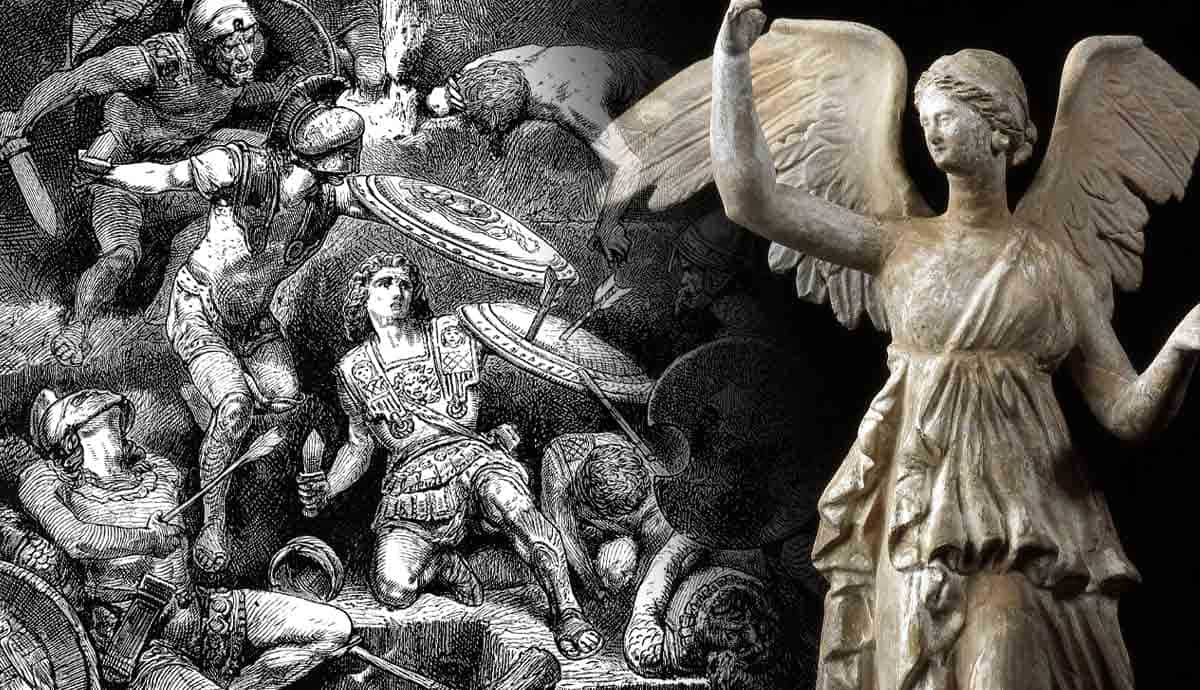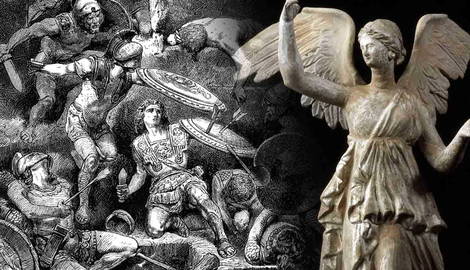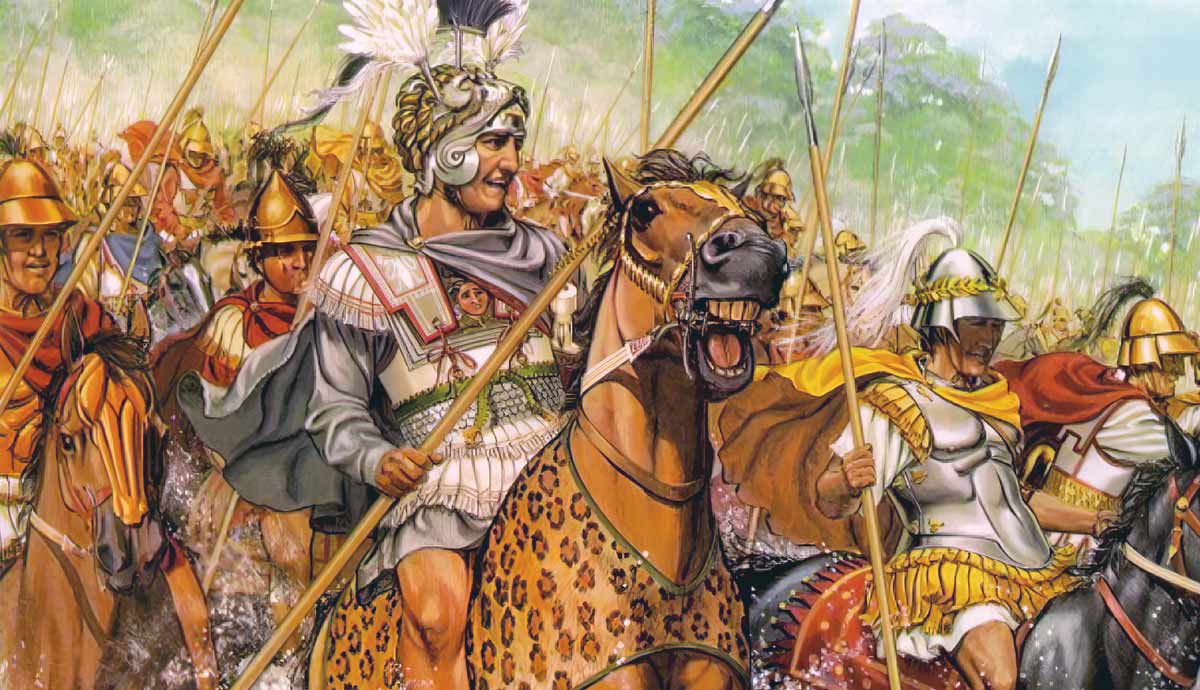
Once part of the Achaemenid Empire, Sogdiana and Bactria had only ever been loosely governed. The arrival of Alexander the Great and his Macedonian army threatened to overturn the established traditional patterns of life in the region. As such, the Macedonians were met with dogged resistance.
Once it became clear that the Macedonians could not be defeated on the battlefield many people retreated into the impenetrable mountain fortresses that dotted the region. The most important of these was known variably as the Sogdian Rock or as the Rock of Arimazes.
A Question of Timing

The Siege of the Sogdian Rock is one of the most famous incidents to occur during Alexander’s time in Central Asia. It was recorded by several ancient historians, who described Alexander’s campaigns. Originally, it seems to have been a part of Arrian’s Anabasis, which other ancient historians drew from and repeated. However, the overall chronology of Alexander’s campaigns during this period appears somewhat muddled to modern historians.
This does not mean that they do not believe that the siege occurred. Rather, the timing and the sequence of events seem off. Following Arrian’s chronology, the siege of the Sogdian Rock occurred in early 327 BCE. If this is the case, then Alexander appears to have been uncharacteristically inactive in 328 BCE and extremely active in early 327 BCE.
Another issue is that the siege of the Sogdian Rock may have become conflated with other similar sieges from this period. During this campaign, Alexander besieged not only the Sogdian Rock but also the Rock of Chorienes and the Rock of Sisimithres. In some traditions, the Rock of Arimazes was not another name for the Sogdian Rock, but a separate fortress in and of itself.
It has also been suggested that Alexander made use of a similar stratagem on each occasion to capture the fortresses. If this is the case, then it is easy to understand how such repetition could have led ancient historians to confuse and conflate the sequence of events. However, in the absence of further and more solid evidence, we must make use of the sources that we have.
Resistance

Following his victory over the Saka in 329 BCE, Alexander the Great was faced with renewed resistance and rebellion. The former Achaemenid satrapies of Sogdiana and Bactria had only ever been loosely governed by the empire. Alexander’s arrival upset the traditional power structures in the region and there may have been cultural clashes as well.
Resistance coalesced around Spitamenes (c.370-328 BCE), a Sogdian nobleman who had previously handed over the Achaemenid usurper Bessus (r.330-329 BCE) to Alexander. Initially, Alexander was too busy with the Saka invasion to deal with Spitamenes who had besieged the Macedonian garrison at Markanda. As such he dispatched a relief column to raise the siege. The officer in charge of the column, Pharnuches, was chosen because he could speak the local language and had shown himself skilled in dealing with the Sogdians.
Unfortunately for the Macedonians, Pharnuches was a better diplomat than a military commander. Spitamenes annihilated the entire column, which consisted of some 2,000 infantry and 300 cavalry. The uprising was now a direct threat to Alexander’s position in the region. Yet when Alexander finally arrived at Markanda, he discovered that Spitamenes had already lifted the siege and was attacking Bactria. Here, Spitamenes was repulsed with great difficulty by the newly appointed satrap Artabazos II (c.389-328 BCE). Interestingly, Artabazos was a former Achaemenid satrap who had been awarded his new position by Alexander in recognition of his service to the Achaemenids.
Eventually, Spitamenes was decisively defeated at the Battle of Gabai in late 328 BCE. He was then betrayed and beheaded by nomadic tribesmen who then sued for peace.
Refuges and Refugees

With the defeat and execution of Spitamenes the Sogdians and their allies were no longer able to field an army that could hope to challenge Alexander. Resistance continued, as many nobles and local leaders were unwilling to give up the fight. However, they now switched tactics. Rather than confront Alexander on the battlefield, those who wished to continue to resist retreated into the mountains.
Today, the regions that made up ancient Sogdiana and Bactria are divided between Afghanistan and its neighbors. This is an extremely mountainous and inaccessible part of the world even now. The ancient Sogdians and Bactrians took advantage of the mountains and built impenetrable fortresses for themselves on high peaks that no army could hope to approach. It was to these fortresses that they now retreated.
One of those leading the resistance against Alexander and the Macedonians was Oxyartes, a Bactrian nobleman who had held a high position in the Achaemenid Empire. Previously, Oxyartes had allied himself to Bessus. However, once it became clear that Bessus was unlikely to triumph over Alexander, Oxyartes joined with Spitamenes and others to arrest and execute him. Now, Oxyartes feared that he would be harshly treated by Alexander and was unwilling to submit. He therefore sent his wife and daughters to a mountain fortress known as the Sogdian Rock. Here he believed that they would be safe while he continued to campaign.
Men With Wings

With the arrival of spring, Alexander increased the tempo of his activities. He appears to have recognized the strength of the Sogdian Rock and now made it his focus. It appears that he felt that since this fortress was so prominent and was believed to be so strong, if he succeeded in capturing it the rest of the region would surrender. Additionally, he learned that Oxyartes’ family had taken refuge here.
Since Oxyartes was now Alexander’s most prominent enemy, capturing his family would also hopefully lead to his surrender. However, when Alexander arrived before the Sogdian Rock, the enormity of the challenge before him sunk in.
Not only was the fortress high on the mountainside, but in every direction the approaches were incredibly steep on all sides. The defenders were also abundantly supplied with all the provisions necessary to outlast a long siege. Yet that was not all. Even worse for Alexander and the Macedonians, there was heavy snow. This made conditions in the Macedonian camp incredibly uncomfortable while also making any attempt to approach the fortress even more difficult. It even provided the defenders with an abundant water source which they readily took advantage of.
However, Alexander remained determined to capture the Sogdian Rock. Recognizing that attacking the fortress would be difficult, Alexander tried to reach a negotiated settlement. Confident in the strength of their position, the defenders refused. Mockingly, the defenders told Alexander to “Seek soldiers with wings to capture the mountain for him, since no other men were of concern to them.”
Rock Climbing

Alexander was enraged by the defiance of the defenders and swore to conquer the fortress. However, it was clear that the Sogdian Rock was not going to be captured through normal means. It would take too long to starve the defenders into submission, and the position was too difficult to assault normally. Therefore, Alexander called for volunteers from those who had acquired rock climbing experience.
Some were hardy mountaineers, while others had gained experience during Alexander’s many sieges. Alexander then declared that the first man to scale the mountain would receive 12 Talents (Approx. $50,000 USD), with every successive man receiving slightly less. Eventually, 300 eager volunteers were assembled.
This picked force then began to ascend the rock face under cover of night to avoid being detected by the defenders. They picked a particularly difficult area as they believed that there would be fewer guards at the top. To assist with the assent, they brought with them iron tent pegs and linen cord. As they climbed the pegs were driven in anywhere that the ground seemed firm or where the snow and ice was solid. They then used the linen cords to pull themselves up as they went.
Progress was slow and painful. Some 30 men are reported to have fallen to their deaths during the ascent, and it is said that their bodies could not be recovered. At last, they reached the top of the mountain just before dawn.
In the Morning Light

Those who survived the climb now took up a position on top of the mountain near the peak. This meant that they were now in a position that overlooked the fortress. As the dawn’s early light began to break, they set up and began to wave the signal flags that they had carried with them during their ascent. In this way, they were able to send a message down to the Macedonian encampment at the foot of the mountain.
Through this prearranged signal they were able to convey to Alexander and the Macedonians that they had arrived and were in position. When Alexander received the signal, he immediately dispatched a herald to the defenders inside the fortress.
The herald was not allowed to approach too closely by the cautious defenders, so he had to shout his message loudly enough to be heard. In a loud voice, the herald called upon the defenders to immediately surrender. The herald then called out that Alexander “… had indeed found men with wings, and the heights of the mountain were in their hands.” As he spoke he gestured to the mountaintop which appeared to bristle with Macedonian soldiers.
The defenders were astounded by this sudden turn of events. They imagined that somehow a far larger force had climbed to the top of the mountain. This sudden reversal of fortune so unnerved the defenders that they threw down their arms and surrendered without further resistance.
The Loveliest Woman in Asia

Alexander now found himself in control of the Sogdian Rock, which was then the most formidable fortress in the region. He also now held the families of rebels who continued to resist his conquest, including the wife and daughters of Oxyartes.
According to ancient historians, it was at this moment that Alexander laid eyes on Roxana (d.310 BCE), or Rukhsana, the daughter of Oxyartes, who was then of a marriageable age. Alexander was instantly smitten with her, and she was described as the most beautiful woman in all of Asia. So madly in love with Roxana was Alexander that he did not treat her like a captive and subject her to rape and dishonor. Instead, he decided to marry her despite the objections of his companions.
While the meeting of Alexander and Roxana, was painted as a tale of great romance in antiquity and even today, it was also a masterful political move. When Oxyartes heard of the favorable treatment his daughter had received, he gave up the fight and surrendered himself. In return, he was lavishly rewarded.
The union went a long way toward winning over the local population and ending their resistance. This ultimately freed Alexander to continue on with his campaign of conquest. It is also worth noting that, although the date of Roxana’s birth is unknown, she would likely have been in her teens at the time of her marriage to Alexander. He would have been about 29 years old, though admittedly such age gaps were common during that time period.
Aftermath of the Siege of Sogdian Rock

Having captured the hitherto impregnable Sogdian Rock, Alexander was able to reduce the other fortresses in the region one after the other. His marriage to Roxana shortly thereafter, clearly helped bring an end to local resistance as well. This freed up Alexander to continue on with his campaign.
Craterus, one of Alexander’s generals, was sent with an army to pacify the former Achaemenid province of Parsetakene. Meanwhile, Alexander remained in Bactria both to wed Roxana and to prepare for his next great expedition. With Sogdiana and Bactria now pacified, Alexander led an expedition across the Hindu-Kush mountains and into India.
Alexander’s capture of the Sogdian Rock is remembered today as one of Alexander’s most successful stratagems. It demonstrated that Alexander was a bold and creative thinker who was willing to take risks. Yet, much of the credit for his success belongs to the 300 Macedonian soldiers who accomplished the impossible by scaling a sheer rock face in the worst conditions possible. This feat has rarely been equaled in the history of warfare.










